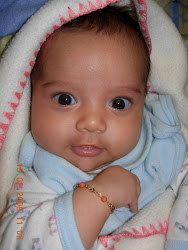Buying your scrapbook
Purchasing a scrapbook is an individual decision. There are many factors to consider when choosing an album.
Page size- the most common page sizes are 8 1/2 by 11 and 12 by 12.
Binding type- the most popular choices are post bound, ringed binders and strap hinge- these albums all allow for pages to be added or removed. Spiral bound albums limit your ability to add or remove pages.
Cost- The cost of scrapbook albums varies widely. Safe albums can be purchased from $10 or less to over $100, with most albums averaging about $35 to $40.
Ease of use- Every scrapbooker has a different opinion on the type of album that they find easiest to use. Many scrapbookers like 3 ring binders because it is so easy to insert and remove pages. Post bound and strap-hinged albums are popular but are a little more time consuming to insert and remove pages. Many scrapbookers like the ease of use that a top loading system provides, in addition to 3 ring binders, you can use Creative Memories albums as a top loading system by using Portrait Page refills and there are post bound albums that are top loading, like the Close to My Heart album.
Here's How:
1. Select 6-10 photos of one event, for example Christmas, Halloween, Family Vacation, or a Birthday Party.
2. Choose the best of these photos to include on your page (all of them may be included) removing those that are out of focus, too far away etc.
3. Crop the photos as desired, trimming away unneeded elements and creating fun shapes (see link below for help).
4. Create a sample layout by laying the pictures on the page in a pleasing design. Continue experimenting with the layout until it pleases you.
5. Use a pencil to lightly trace the outline of your pictures when you have them in the "perfect" places on the page. Set the photos aside.
6. Select one color of acid-free photo mounting paper that accents the colors in your photos.
7. Cut 2 triangles (approximately 5 3/4 x 5 3/4 x 8 1/4 inches) from your photo mounting paper.
8. Place the triangles in opposite corners of your page on top and bottom, affixing with mounting tape.
9. Replace the photos, affixing with mounting tape, and erasing the traced lines just before adhering each photo to the page.
10. Consider adding a title to the page with either acid-free permanent pens or sticker letters (see link below).
11. Journal below and/or around the photos, remembering to include Who was there, What you were doing, When it took place, Where were you, Why were you there, and How everyone was feeling or what you were thinking.
12. Add a few acid-free stickers to give color to your layout and continue the theme of the page (for example: candles, a cake, balloons, and/or party hats for a birthday page).
13. Slip on a page protector to keep your completed page safe from dirt, dust, spills, and fingerprints.
14. Admire your first completed page showing it off to friends and family.
15. Start thinking about your next page.
Tips:
1. For your first page, keep it simple.
2. Don't think about the 18 boxes of pictures under your bed, just focus on the page at hand.
3. Most of all, have fun, relax, and try not to get frustrated or overwhelmed.
Simple steps to help you get started journaling in your scrapbooks which is the key to preserving your memories.
Difficulty Level: Easy Time Required: Varies
Here's How:
1. Choose acid-free, permanent, scrapbook pens in colors that coordinate with your scrapbook page.
2. Begin by adding a title to the page. You can keep it simple; it could just include the event and date, i.e. "Easter 1998."
3. Next, start with the basics, especially dates and full names. Write this information under or around your photos.
4. Continue by adding some basic circumstantial information, such as where the events in the photos took place, or why the people in the pictures were there.
5. If you have room on your page, you can complete your journaling by adding some personal thoughts, emotions, poems, or quotes. If you are having trouble, keep it simple, for example, "Everyone was heard to say that they had a great time at the party."
Tips:
1. Your personal handwriting adds another element of history to your albums (even if you don't especially care for it). However, if you can't bring yourself to write in your albums try printing the journaling on acid-free paper from your computer and mount it on your pages.
2. Try fun things on occasion like adding sticker pictographs to your journaling to jazz it up.
3. Lastly, remember that your family's story is the most important part of preserving the past and the present for the future, don't neglect it with too few words.
Add Journaling - Personalize your page by writing down names, date, and place of event, as well as memories or quotes from some of the people involved. Called journaling, this is probably the most important step when creating a heritage scrapbook. For each photo or set of related photos, you should follow the five Ws - 1) who (who are the people in the photo), when (when was the photo taken), where (where was the photo taken), why (why is the moment significant), and what (what are the people doing in the photo). When journaling, be sure to use a waterproof, fade resistant, permanent, quick drying pen - preferably black as research has shown that black ink best stands the test of time. Other colors can be used for adding decoration, or other non-essential information. Heritage Tip - When journaling in your heritage scrapbooking, it is important to be specific, adding related memories and details to the names and dates




























